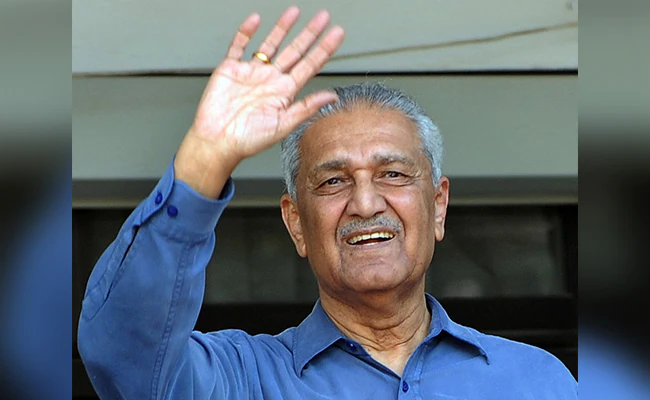Pakistan’s rogue nuclear- weapon scientist A.Q Khan who passed away on Sunday, leaves behind a legacy of serial proliferation—the penultimate step that could lead to the seepage of atomic weapons to international terror groups.
The murky story of Khan’s rise as a master nuclear proliferator begins in 1974, when India exploded its first nuclear device. Then 41, the India-born Khan, who fled to Pakistan after partition, was working as a metallurgist at a uranium enrichment plant in the Netherlands. The Dutch facility was engaged in cutting-edge work on uranium enrichment for civilian power reactors.
The Indian test was enough to fire Khan’s lifelong mission—to arm Pakistan with a nuclear equaliser. The first step for realising his designs came when Pakistan’s former Prime Minister Zulfikar Ali Bhutto took notice of the several letters that Khan had written to officials about his ardent wish to help in the development of Pakistani atomic bombs. On Bhutto’s instructions, the Pakistani embassy in Amsterdam contacted Khan. Very soon, Khan was copying designs of centrifuges—spinning machines used for enriching uranium to weapon-grade purity. Simultaneously , he was listing companies that could provide Pakistan with the know-how to produce Highly Enriched Uranium (HEU) —the feedstock for an atomic bomb.
The Dutch security agencies had gotten wind of his nefarious activities but on the advice of the CIA, which had been taken into confidence ,they did not arrest the scientist in the hope of nailing the entire network that Khan was engaging with. Before he could be nabbed, the Pakistani scientist along with his family fled to Pakistan. But by that time, he had stolen the centrifuge designs—an act which the rest of the world would pay for dearly in the coming decades.
The Pakistani atomic weapons programme galloped on Khan’s return. Khan focused on developing HEU using equipment sourced from European companies, which he had listed during his stay in the Netherlands.
Geopolitical circumstances also helped the Pakistani scientist to achieve his goal. Though the US was aware of his activities, it looked the other way. Instead, Washington rewarded Pakistan with military and economic aid, in return for Islamabad’s support to defeat the Soviets who had pushed their forces into Afghanistan in 1979. Former US President Jimmy Carter did so on the advice of his national security adviser the late Zbigniew Brzezinski. Expanding operations in Afghanistan, Brzezinski wrote, “will require a review of our policy toward Pakistan, more guarantees to it, more arms aid, and, alas, a decision that our security policy toward Pakistan cannot be dictated by our non-proliferation policy.”
The Long Shadow of A.Q. Khan How One Scientist Helped the World Go Nuclear
Carter abided by Brzezinski’s advice. Pakistan was rewarded with $400 million in economic and military aid.
During a television interview in 2009, Khan himself acknowledged that the Soviet-Afghan war “provided us with space to enhance our nuclear capability. Given the U.S. and European pressure on our program, it is true that had the Afghan war not taken place at that time, we would not have been able to make the bomb as early as we did.”
The damage that the US policy of indifference to the Pakistani nuclear programme has been enormous.
Also read: North Korea fires hypersonic missile, officially kicks off an arms race with Seoul and Tokyo
While working on the Pakistani programme, Khan established a grey market transcontinental network whose tentacles spread into Europe, Asia and Africa. “Khan’s network started with a handful of companies in Switzerland and Germany willing to exploit lax export controls. He also developed strong ties to engineers and other experts in Germany, the Netherlands, Switzerland, and the United Kingdom. Eventually he was producing components in factories in Malaysia and South Africa and maintained a shipping hub in Dubai. During the 1990s, however, Khan’s smuggling operation remained under the radar of the United States, which was focused on the possibility of Russia providing nuclear secrets to Iran,” said the Foreign Affairs article.
Countries that benefited from Khan’s under the radar operations included Iran, Libya and North Korea, which continues to threaten destabilisation of the Indo-Pacific region. Khan had reportedly visited Iran around 1987 to lay the foundations of Tehran’s first uranium enrichment plant at Natanz. By the end of the decade Khan had dispatched over 2,000 components to assemble centrifuges for enriching uranium.
Forging a nuclear connection with North Korea was even more dramatic. By the mid-nineties, Pakistan was struggling with developing missiles which could deliver a nuclear payload. Khan wanted to learn from the North Korean experience of developing the Nodong missile. Former Prime Minister Benazir Bhutto was a party to the deal where in return from missile know-how, North Korea benefited from Pakistan’s experience of developing atomic weapons. It turned out to be a perfect quid pro quo.
If today there is a danger of nuclear weapons seeping from Pakistan to international terror groups such as the Taliban and beyond, its roots would invariably be traced to Khan’s clandestine operations.
“Driven by ego, nationalism, and a skill for subterfuge, Khan built a clandestine global network that increased the danger of a nuclear catastrophe. Worse, he was never forced to identify the participants in his black market. Policymakers and intelligence agencies simply do not know the full extent of his ring, which means they can never close the file on the dangers,” warned the Foreign Affairs article.




















